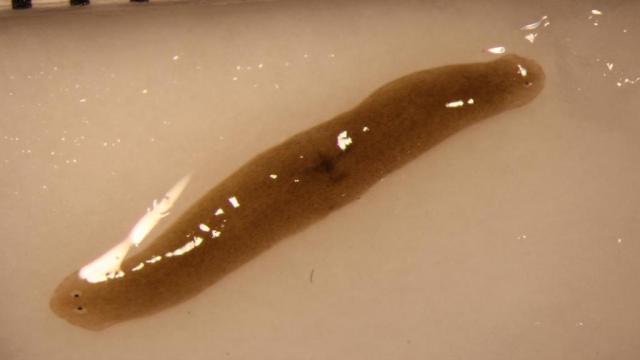While space can destroy us in myriad ways, it’s never been credited with making anything more adorable. That’s all changed now thanks to an experiment in which researchers at Tufts University sent flatworms to the International Space Station (ISS). Microgravity seems to have impacted the creepy-crawlies in some seriously cute ways, even turning one worm into a double-headed, googly-eyed monster. Awww.
HELLLLOOOOOOOO!!!! (Image: Junji Morokuma, Allen Discovery Center at Tufts University)
The aforementioned planarian flatworms (D. japonica) flew to the ISS on 10 January 2015, on board SpaceX’s Commercial Resupply Service Mission. Once there, the worms spent five weeks in space, giving them enough time to wriggle around in microgravity and micro-geomagnetic fields. Some of the worms were left whole, while others were amputated, as the team wanted to test how the flatworms would regenerate in this environment. Flatworms were chosen above other organisms since they’re known for their remarkable regenerative abilities — and regenerate they did.
When the worms returned, researchers spent 20 months studying how the space worms compared to two sets of control worms kept on Earth. The team observed several changes between the two kinds of worms, most notably, that one of the space-exposed worms had generated another head. When researchers amputated both of those heads, the worm then generated another head onto its fragmented body. While the double-headed beast was rare, regenerating new heads is nothing unusual for flatworms — they can even grow a new head with their memories still in tact.

Space-exposed worms. (Image: Junji Morokuma, Allen Discovery Center at Tufts University)
There were other oddities as well. Ten of the space-exposed worms reacted unusually when placed in spring water, curling up in a paralysed state for a few hours before returning to normal. When exposed to red and blue light, the space-exposed worms tended to prefer less time in the darkness than Earth worms did. Space also seems to have impacted the worms’ bacterial communities, disturbing their metabolism and secretion. Then again, who doesn’t get an upset tummy in space?
While the differences in the groups of worms were significant, the researchers struggled to provide the Earth worms with the same temperature environment the space worms were experiencing, so that’s a limitation worth noting. The results were published on June 13 in Regeneration.
Hopefully, the study can help scientists learn about regenerative health in space. With Elon Musk and everyone else gearing up for Mars, it’s important to know how microgravity will impact our bodies.
“As humans transition toward becoming a space-faring species, it is important that we deduce the impact of space flight on regenerative health for the sake of medicine and the future of space laboratory research,” co-author Junji Morokuma, a research associate at Tufts University, said in a statement.
Space probably won’t make us cuter, but hey, it’s worth a shot.
